1. What exactly makes Hot Wheels a mainstay on shelves across America? NPR recently examined the enduring popularity of the toy brand and how it’s managed to keep inflation from ratcheting the price of the cars.
Hot Wheels are a retail oddity. They remain one of the most affordable toys in the country at a time when inflation is chipping away at savings accounts and compounding credit card debt for many Americans, experts like James Zahn told NPR. “It is exceptionally rare to find a toy that maintains its price for a few years, let alone more than five decades,” Zahn says. “Hot Wheels are an anomaly in that the continued sales volume and razor-sharp production pipeline manage to keep costs just low enough to maintain that sweet $1 price point.”
2. Mark Axen recently forwarded History.com’s summation of the 1936-1937 GM sit-down strike, one of the most important events in auto labor history.
The strikes had lasted for 44 days, left 136,000 GM workers idle and caused 280,000 cars to go unbuilt. Though much of the public was against sit-down strikes and considered labor unionists to be dangerous rabble-rousers, GM’s public image had suffered, too. And labor would never be the same. Union membership ballooned from 3.4 million workers in 1930 to 10 million in 1942, and the majority of the automobile industry swiftly unionized, gaining benefits and pay they never would have obtained without organizing. “They were the most important strikes in American history,” Lichtenstein says. For decades, he says, industrial unionism reigned supreme, leading to a higher standard of living for working Americans.
Stellantis media photo
3. Boardroom intrigue typically amounts to inside baseball, but as Bill McGuire of Mac’s Motor City Garage tells the story of the 1960 Chrysler scandal, the ramifications played out in the cars the company built and the scandal itself nearly led to the company’s demise.
On April 28, 1960, Lester L. “Tex” Colbert stepped down as president of the Chrysler Corporation to take the honored position of chairman of the board. His 10-year run as president had apparently been a successful one. Accomplishments under his leadership included the development of three advanced hemi V-8 engine families for Chrysler, Desoto, and Dodge, the Torqueflite transmission, the launch of the compact Valiant, and the transition to Unibody construction. For his successor as president, Colbert hand-picked his longtime lieutenant, friend, and Bloomfield Hills neighbor, William C. Newberg. And then barely days later, hell broke loose.
One influential Chrysler board member, Pittsburgh coal magnate George H. Love, was curious enough about the continuing accusations to press for an independent audit of the company. The audit, conducted by Touche, Ross & Co., almost immediately uncovered an alarming conflict of interest: Newberg and his wife owned a 50 percent interest in two Chrysler parts suppliers, Press Products, Inc. and the Bonan Company. Suddenly the high parts costs and poor quality had a plausible explanation. On June 30, Newberg was forced to resign after just 64 days as president. As part of his separation agreement, Newberg agreed to repay $455,000 in profits he received from his outside companies for their contract work with Chrysler.
While the executive offices were erupting in chaos, engineering, production, and sales were wracked with turmoil as well. It was Newberg who reportedly made the abrupt decision in mid-1960 that the 1962 Plymouth and Dodge had to be radically downsized, and the engineering and styling staffs struggled to meet the sudddenly tight deadlines.
The proposed full-sized Dodge and Plymouth designs for ’62 were hastily shrunk down to fit on a stretched Valiant platform, and no one was happy with the result. In a now-famous phrase, Chrysler design vice-president Virgil Exner called the awkwardly styled cars “plucked chickens.” As one story goes, Newberg made the downsizing decision after mishearing some party gossip about Chevrolet’s plans for the 1962 Chevy II, which he took to mean the carmaker’s full-sized line.
4. Over the holidays, Kustomrama shared a thorough deep-dive into the canted-quad headlamps styling trend that spans the feature’s production-car origins as well as its spread among customizers across the country in the late Fifties and early Sixties.
Glenn Goode’s Big People – The Documentary
www.youtube.com
5. Finally, a recently released documentary on Glenn Goode tells the story of the man largely acknowledged to have saved the muffler men and other massive fiberglass roadside advertising statues from obscurity. (via)
There are storage solutions and then there are garages. And when it comes to the great American garage, nothing makes it a bucket list garage-mahal quite like a collection of classic cars and all the toolboxes, parts, engine stands and workbenches surrounding it.
To take that idea a step further, the ultimate home shop is one purpose-built for the job of housing and protecting all that iron. And a pole building, designed for and by classic car collectors, is not only a great idea, but one that will make owning, wrenching and enjoying these cars that much easier.
Here at Wick Buildings, we’ve got the collector in mind when we design our post-frame structures. We know that a new shop isn’t just a practical decision, but it’s also an emotionally-driven one: you choose the type of building based on needs, but also on how you want to best protect and enjoy your investments. And it’s with that in mind, that we build features you need with the experience and support you want into every one of our pole building shops.
Proper ventilation for classic cars
One of the most important features of a new pole building is one that isn’t instantly noticed when choosing a style and size: proper ventilation. Proper air ventilation is the best solution to control condensation. Keeping that moisture off your tools, undercarriage and parts will keep potential rust from forming. Any internal combustion engine-powered vehicle will emit airborne toxins, but vintage automobiles, motorcycles, boats, snowmobiles, farm equipment and the like are in a class of their own. The architects and engineers at Wick understand this issue and have designed features into every structure to make sure that it’s addressed when you’re in – and out – of your new shop:
1. Vented ridges: everyone learns in grade school that heat rises, but Wick buildings use that natural phenomenon to direct stale air to the roof of the structure and allow it to escape through a protected vent in its peak.
2. Vented eaves: a vented ridge design feature is only as effective as the fresh air that can replace the stale air it’s so good at removing from the building. Our vented eaves allow fresh air to flow into the pole building as the other half of the total air circulation process. These vents are protected from the elements, while being effective in keeping your classics cushioned in fresh air.
3. Vented building features: as an optional design feature, we’ve designed a vented cupola that can be incorporated into the roof your building – they look great and function just as well. The gables of your building can also be vented on both ends, which create more natural ventilation.
4. Powered ventilation options: natural, passive ventilation designed into the building is always a good idea, but you might need more. In that case, a few options are available:
– Attic fans or ventilators. Mounted either in a gable wall with opening and closing shutters or under a covered vent in the roof, they can move a lot of air and can be triggered by temperature or humidity levels.
– Power vented cupolas. These electric fans mount in the cupola and can also be triggered by temperature or humidity levels.
– Exhaust fans. Similar to the common bathroom fan, these can be used to remove moisture, vapor, or odors from interior spaces or rooms under the attic. Use the appropriate filtering system for the type of exhaust you are removing.
– Air exchangers. This option is commonly used in residential and commercial environments when you are exchanging interior air that is heated or cooled.
Fresh air enters through the vented eaves. Warm and humid air exits through the vented ridge.
For more information on the ventilation features Wick Buildings has designed:
https://www.wickbuildings.com/blog/pole-barn-ventilation-essentials/
Storing your collector cars
Choosing the right type of pole building to house all your collector car dreams is one thing, but maintaining those vehicles so they don’t turn into nightmares goes hand-in-hand with that choice. And making sure your treasures enjoy the proper atmosphere will go far in making sure you do, as well.
1. Proper heating: if you live in a region that sees all the seasons, make sure your new building can properly heat itself in colder months. After all, moisture is your enemy and the properly oscillating air – at the right year-round temperature – is key to keeping your cars warm and dry.
2. The man cave: if you’ve got a collection of cars, chances are that you’d like to spend some time around them, especially when you’re not under them. A few couches, a bar, a TV or even a kitchen of some scale might be an essential element of your dream garage: make sure you design these elements into your new pole building with the climate control ideas in mind to keep you as comfortable as your cars are.
3. The plastic sheet: hot tip: park your car(s) over a plastic sheet to keep any moisture coming up through the floor during temperature fluctuation from affecting its undercarriage.
4. Drainage: speaking of moisture, make sure the floors in your new pole building have proper drainage features. Nothing worse than puddles of water or fluids that can’t escape the interior of your building quickly and efficiently.
5. Keep it lubed: the worst thing for a classic is not driving it. Remember, these cars were meant to do one thing very, very well: move. While you’re not driving it, keep its moving parts properly lubricated, greased and maintained. And while we’re talking about storage, disconnect the battery (better yet, remove it) when it’s parked for extended periods of time.
For more tips on storing your collector cars:
https://www.wickbuildings.com/blog/store-classic-car/
Contact us!
When it’s time to start making your dreams a reality, take the first step and contact us: not only do we love hearing about your passions, we love building the ultimate garage-mahal to house them!
In 1970, Hans Herrmann and Richard Attwood drove the 917 KH (short-tail) with start number 23 and in the world-famous red-white Salzburg design to the first of (so far) 19 overall wins for Porsche at the circuit. The 917 was Porsche’s first time in the league of immensely powerful, large-capacity racing cars. Its 580bhp 4.5-litre 12-cylinder engine set new standards, and is still legendary today.
Changes in the regulations meant that prototypes were allowed a maximum engine size of 3.0 litres, and for sports cars 5.0 litres were allowed – but a series of at least 25 had to be built. The 1969 race season allowed the 917 to become fully race proven, with the result that the car entered 1970 with its reliability assured and improved aerodynamics to rectify its previously wayward behaviour at high speed.
For the 1970 Le Mans 24 Hours the factory did not enter the cars directly, but via its partners, John Wyer Automotive and Porsche Salzburg. In a rain-soaked race, amid fierce competition from Ferrari, the 917s fought a close-won victory. Here’s the picture I took of it at the Concours of Elegance 2020.
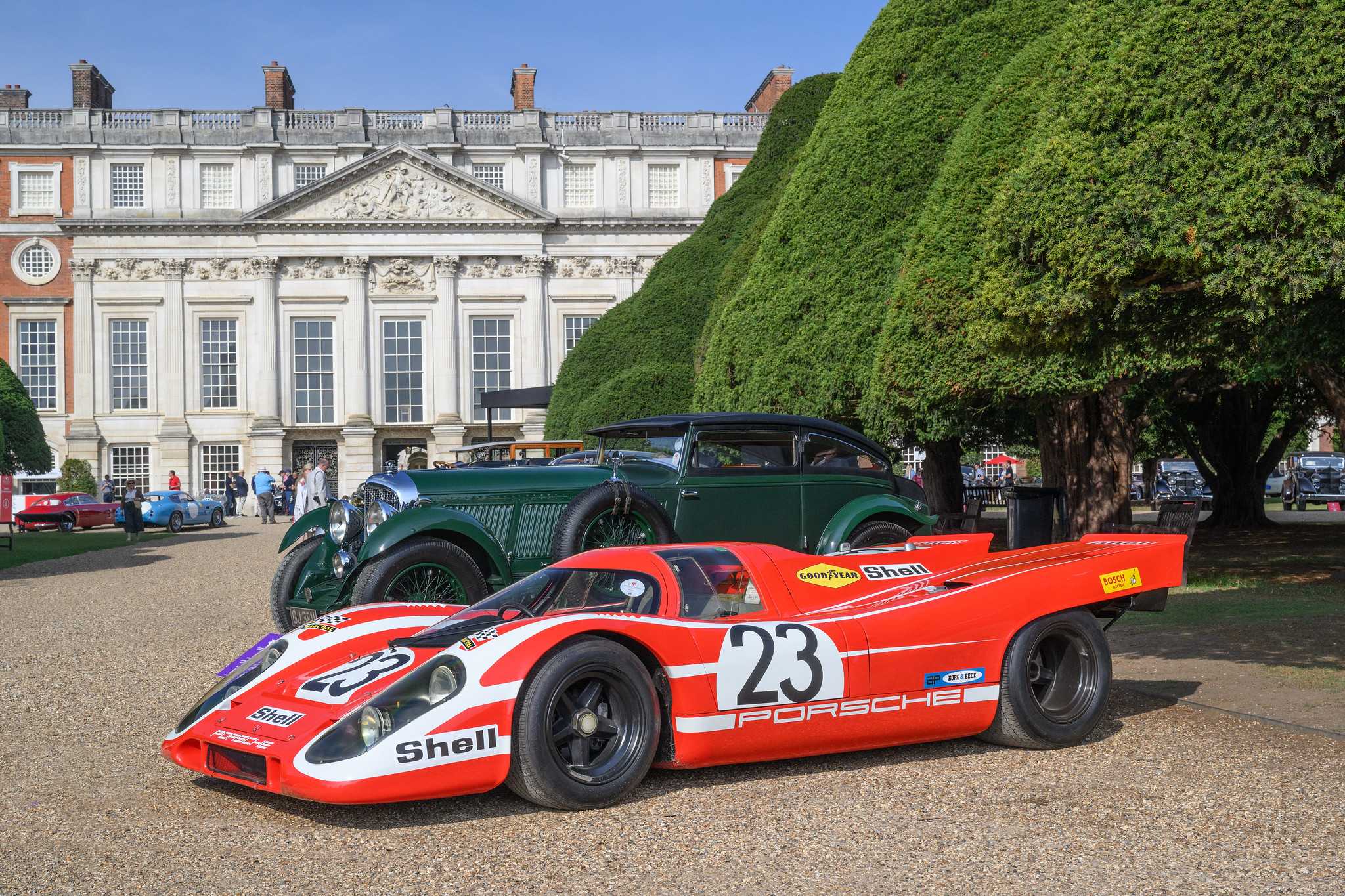
This car, a Salzburg entry in the team’s red and white livery started with a disadvantage – driver Richard Attwood had opted for the smaller of the two engines available by 1970, the 4.5-litre instead of the 5.0-litre, and had chosen the 917 KH ‘short-tail’ version rather than the faster 917 1H long-tail. This was because the long-tail he’d driven at Le Mans in 1969 had been extremely unstable – but by 1970 the long-tail design had been made far more stable.
So, initially, Attwood and co-driver Hans Herrmann lagged behind the rest of the 917s and the Ferrari 512s. However, as rain started to fall in the evening, becoming torrential through the night, the car’s milder specification and the two drivers’ experience shone through – and to their great surprise they found themselves in the lead.
The heavy rain caused misfiring through the night, due to water leaking onto the ignition components, but the car kept going. After 24 hours it was still in the lead, despite the drivers being exhausted – particularly as Artwood later found that he had been suffering from the mumps.
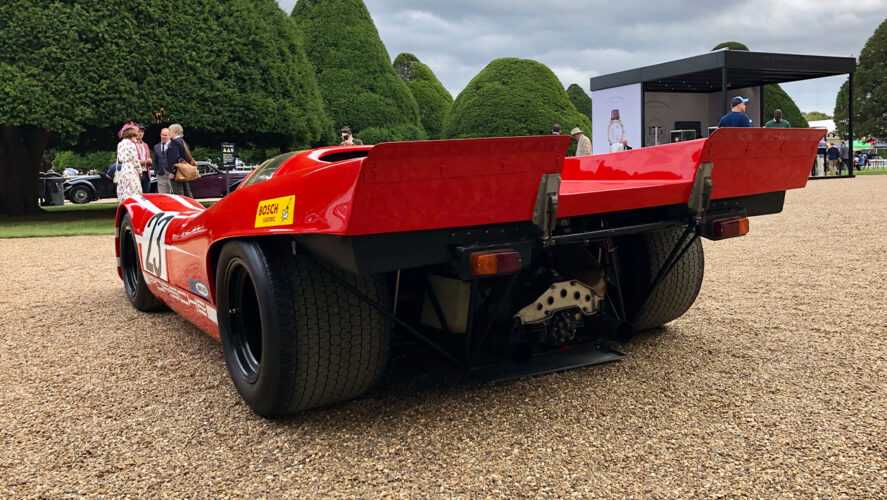
This was Porsche’s first-ever overall win at Le Mans, and another 917 finished second. Since then, Porsche has achieved a record total of 19 overall La Sarthe victories to date – but the first, in car 23, was surely the greatest of all.
ENGINE
4.5-litre, flat-12, double overhead camshaft, 580bhp, fuel injection
CONFIGURATION
Rear engine, four-speed manual transmission, rear-wheel drive, tubular spaceframe, glassfibre bodywork, unequal upper and lower arms, coil springs, discs
The post How the 917 Won Porsche’s First Ever Le Mans appeared first on My Car Heaven.
The Alfa 6C 1750 was one of the sporting greats of the 1920s and ’30s. Introduced at the 1929 Rome Motor Show, it was technically virtually identical to its predecessor, the 6C 1500, except for an enlarged version of the six-cylinder overhead-camshaft engine designed by Vittorio Jano – who had been poached from Fiat by Enzo Ferrari, then of Alfa Romeo‘s racing department.
The idea of the larger capacity was for the model to be able to cope with heavier bodywork, and so the first versions had a long wheelbase. But, of course, a short-wheelbase Sport variant was soon also introduced, using a double-overhead-camshaft version of the 1750 engine. A more powerful iteration of the Sport, named the Super Sport, was then launched, with a 95bhp supercharged development of the double-overhead-camshaft unit.
Production of the Sport and Super Sport lasted for only two years before they were replaced by the naturally aspirated Gran Turismo and supercharged Gran Sport. These were the most powerful, as well as the shortest, of the series.
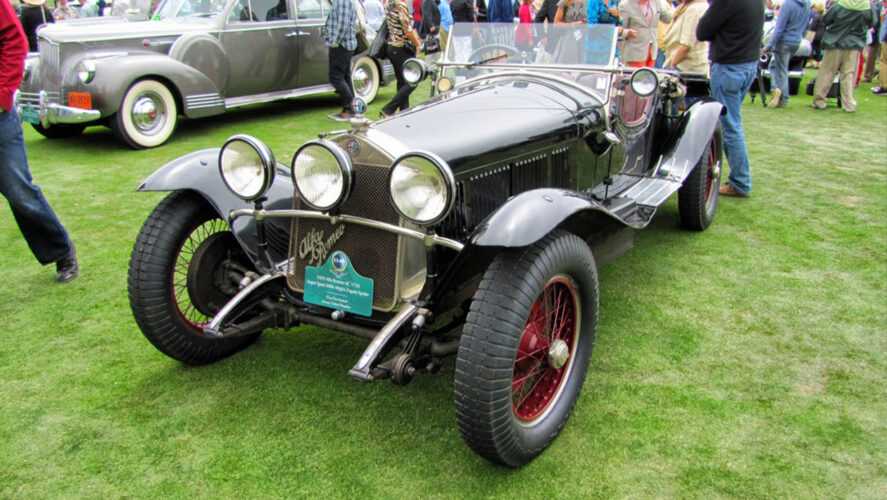
As was the norm in that era, these models were bought as rolling chassis to be bodied by the coachbuilders of the buyer’s choice. Most examples went to Italian coachbuilders - the bulk of them to Zagato and Touring, and a few to Castagna and Stabilimenti Farina. Zagato’s bodies were popular for the competition cars due to their light weight.
In 1933 the Gran Sport was replaced by the 8C 2300, essentially an eight-cylinder version of the Gran Sport. The Turismo was superseded by a series of six-cylinder cars that continued to be produced until the outbreak of World War Two. This car, chassis no. 0312867, which I saw at the Concours of Elegance 2020, was prepared for the 1929 Mille Miglia, and is one of the 52 Super Sports built on the third-series 6C 1750 chassis. It was completed in March, and soon after that it was driven to victory in the Mille Miglia by Giuseppe Campari and Giulio Ramponi. Prominent businessman Enrico Wax from Genoa then paid a premium to acquire the car, seeing the kudos of owning a Mille Miglia winner – and so it was cherished virtually from new, making it one of the most original surviving Alfa Romeos of its era.
ENGINE
1.75-litre, straight-six, DOHC, supercharger, 95bhp, single carb
CONFIGURATION
Front engine, four-speed manual, rear-wheel drive, separate ladder chassis, aluminium body, live axle, semi-elliptic spring suspension, drum brakes
The post The Rare and Beautiful 1929 Alfa Romeo 6C 1750 appeared first on My Car Heaven.
Near the top of any list of great classic road racers, you will find the Aston Martin DB4 GT. Competition-winning know-how inspired every facet of its design, and yet it also turned out to be effortlessly beautiful - two qualities that maddened its Modena competition. This model forced Ferrari to up its sports car game by breaking the famous Italian brand’s stranglehold on a discipline it had dominated since the early 1950s.
From the DB4 GT’s Perspex headlamp covers to its preposterously powerful (for the time) 302bhp straight-six engine, it was ready for Le Mans right from the showroom. In fact, one famous incident would prove this outright. At the 1959 Bahamas Speed Week, a works DBR2 was rolled just before its next race. The factory team had no choice but to pluck a customer’s stock DB4 GT from the car park and give it to Stirling Moss. He went on to win that race, cementing the model’s legend in the process.
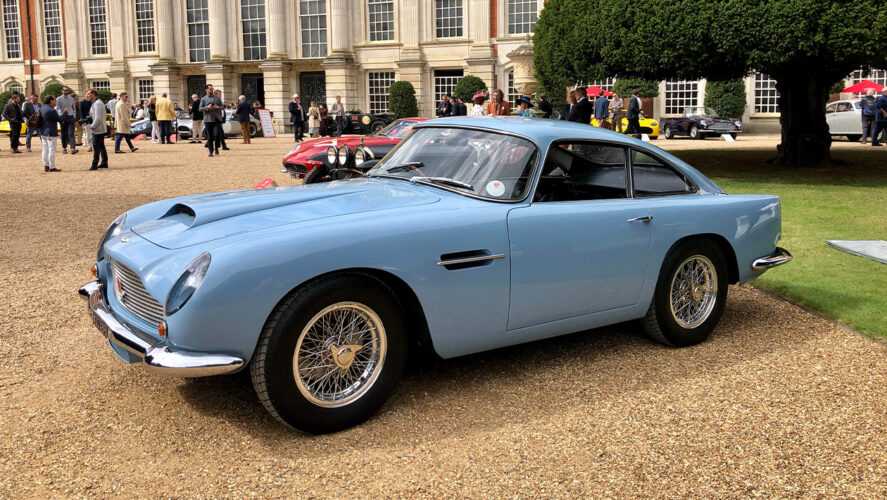
Simply upping the power would have been enough for most makers, but Aston Martin went so much further. Weight saving was taken to near-fanatical levels. The wheelbase was shortened by five inches, the rear seats were removed and the aluminium bodywork was thinner than that used on the road-going DB4. Even the quarter and rear window glass was swapped for lightweight Perspex. Borrani alloy wire wheels finished off a crash diet that saved 91kg (2001b) over the standard DB4. All this effort wasn’t wasted, with the car winning its opening BRDC Sportscar race at Silverstone, again in the hands of Stirling Moss.
This exceptional and unrestored DB4GT, that I got to see and photograph at the Concours of Elegance 2020, is thought to be the only car finished in this attractive shade of Wedgwood Blue from the factory. It’s also one of just 45 made in right-hand drive (from a total production of 75), and has remained in the UK ever since it rolled out of Newport Pagnell 60 years ago. For a time, the car belonged to prolific historic racer The Right Honourable Patrick Lindsay before passing to the equally well-known David Heynes. Now, in the hands of its current long-term owner, the car is once again used in anger on the circuit; just as Aston Martin intended.
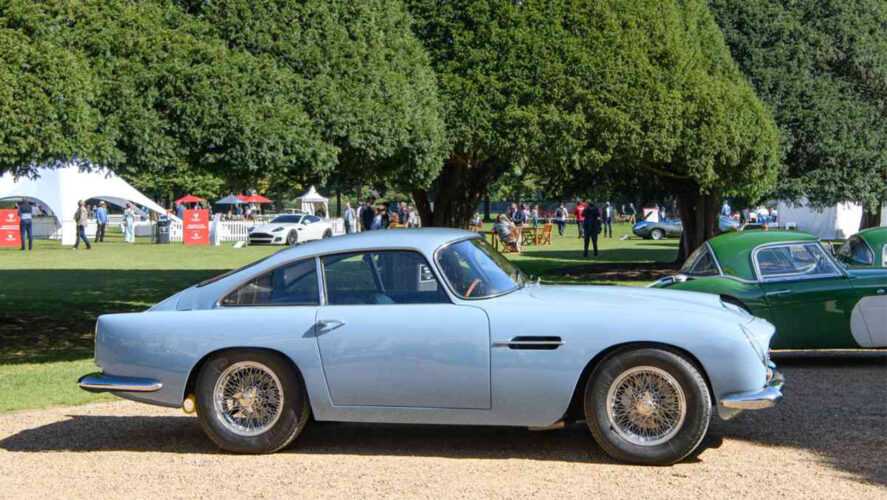
ENGINE
4.2-litre, straight-six, dual overhead camshaft, 385bhp, triple carburettors
CONFIGURATION
Front engine, five-speed manual transmission, rear-wheel drive, unitary body and chassis, coil-spring front with coil-spring live rear axle with Watt’s linkage, discs all round
The post The Exquisite and Beautiful 1960 Aston Martin DB4 GT appeared first on My Car Heaven.
UJB 140 is one of the four works Auston-Healey 3000s that were built by the factory for use in the 1960 Sebring 12 Hours. The car was used as a spare at that meeting, which at the time was the only American race on the calendar that counted toward the World Sportscar
Championship. Previously to this, British motor sport legend Jack Sears had driven the 3000 for BMC at Silverstone in order to test three-piston Girling brakes.
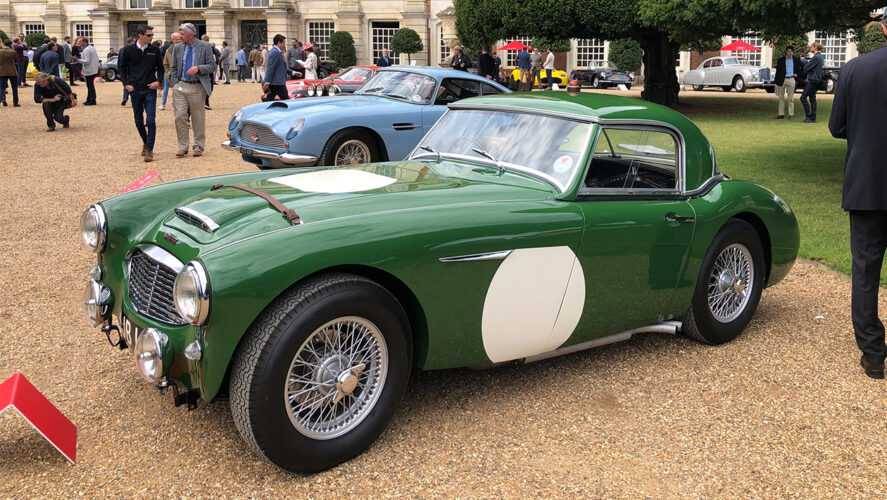
Directly after the Sebring event the car was sent to Hambro Automotive Corporation, the New York importer of Austin-Healeys. From here in August 1960 it was bought by Richard Ecklund, the first actual owner of UJB 140. He raced the 3000 in SCCA events at Harewood Acres in Canada and Watkins Glen in New York state.
In 1986 Bob Deuell, a close racing friend of Richard’s who shared the car on occasion, bought UJB 140. At that stage, there were only 20,000 miles on the odometer. Bob prepared the Austin-Healey and raced it in Historic events until he sold it to Jerry Bensinger, a dealer friend, in around 2007. The 3000 then passed to Craig Hillinger, and on to Peter Jaye in 2009, who implemented an outstanding restoration to its 1960 Sebring configuration. The picture above is the one I took of the roadster at the Concours of Elegance 2020, with Racing Green paint and hardtop.
ENGINE
2.9-litre, straight-six, overhead valve, 200bhp, twin carburettors
CONFIGURATION
Front-engine, four-speed manual transmission, rear-wheel drive, separate chassis, coil-spring front suspension, semi-elliptic springs rear, discs all round
The post The 1959 Austin-Healey 3000 appeared first on My Car Heaven.
